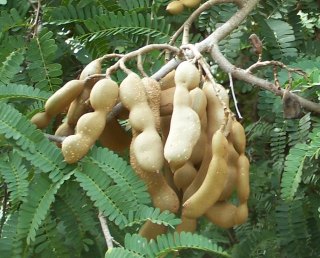
Green Tamarind
Tamarind (Tamarindus indica) is a tropical fruit renowned for its unique blend of sweet and sour flavors. Encased in a brittle brown pod, its sticky, dark reddish-brown pulp surrounds several hard seeds. This versatile fruit is celebrated both for its culinary applications and its nutritional benefits.
In many cultures, tamarind is used fresh or processed into a paste or concentrate to enhance a variety of dishes. It lends its signature tang to savory sauces, curries, and chutneys, while also starring in refreshing beverages and delectable confections like tamarind balls.
Botanically a member of the Fabaceae family, tamarind is native to tropical Africa and the Indian subcontinent, though it now flourishes in many warm regions worldwide. Its rich history is intertwined with trade and cultural exchange, making it a cherished ingredient in Indian, Thai, Mexican, and Caribbean cuisines.
Whether you’re enjoying a tangy tamarind drink or a spicy curry enriched with its bold flavor, tamarind continues to be a culinary treasure that bridges tradition and innovation.
Explore the many uses of tamarind—from its role in classic recipes to its modern reinterpretations—and discover why this ancient fruit remains a favorite around the globe.

Green Tamarind

Ripe and Green Tamarind
Tamarind's applications are as diverse as its flavor profile. It is a key ingredient in beverages like tamarind juice and agua de tamarindo, and it imparts a tangy zest to sauces and condiments such as Worcestershire sauce and various Asian dressings. In sweets, tamarind is transformed into candies, jams, and even tamarind balls that offer a burst of flavor in every bite.
With a storied past and a dynamic present, tamarind remains a beloved fruit that continues to inspire creative culinary expressions across cultures.

Ripe Tamarind

Tamarind Balls

Tamarind Drink